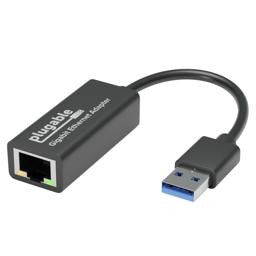This article helps to fix an issue in which Windows 10 doesn't install specific drivers for USB audio devices on the first connection.
Unknown Device Identifier 9.01 on 32-bit and 64-bit PCs. This download is licensed as freeware for the Windows (32-bit and 64-bit) operating system on a laptop or desktop PC from drivers without restrictions. Unknown Device Identifier 9.01 is available to all software users as a free download for Windows. 'No device drivers were found' when installing Windows 10 using a USB I have just finished a PC build and when booting windows it tells me 'No device drivers were found'. Many users have said simply to switch USB ports to 2.0 ports but my PC case is a newer model and only has USB 3.0 ports. This Generic USB Driver can recognize most USB drive's if you are still using the Windows 98 OS. This driver has not been updated for several years, and it won't be updated. Generic usb joystick - This Generic USB Driver can recognize most USB drive's if you are still using the Windows 98 OS.
Original product version: Windows 10, version 1703
Original KB number: 4021854
Symptom
When you connect a USB audio device to a Windows 10 Version 1703-based computer the first time, the operating system detects the device but loads the standard USB audio 2.0 driver (usbaudio2.sys) instead of the specific device driver.
Cause
This issue occurs because the USB audio 2.0 driver (usbaudio2.sys) isn't classified as a generic driver in Windows 10 Version 1703. Therefore, the system assumes that a compatible, nongeneric driver is installed for the device even though the driver is generic.
This issue also causes Windows 10 Version 1703 to postpone the search for other compatible drivers through Windows Update that typically occurs immediately after you install a new device.
Resolution
To fix this issue, use one of the following methods.
Method 1
To resolve this issue, install update 4022716.
Method 2
If the device-specific driver is distributed through Windows Update, you can manually update the driver by using Device Manager. For more information about how to do this, see update drivers in Windows 10.
Method 3
If the device is not yet connected, first install the device-specific driver, such as by using the appropriate installer. After the device-specific driver is installed, Windows 10 will select that driver instead of the standard USB audio 2.0 driver when you first connect the device.
Note
See the device manufacturer's user guide for specific instructions about how to install the driver.
Method 4
If the driver isn't distributed through Windows Update, you can manually reinstall the driver. To do this, follow these steps:
- Install the device-specific driver (see Method 2).
- Open Device Manager.
- Right-click (or tap and hold) the name of the device, and then select Uninstall.
- Restart the computer.
When it restarts, Windows will try to reinstall the device by using the device-specific driver.
-->Symptoms
Consider the following scenario:
- You connect a Universal Serial Bus (USB) audio device, such as an audio adapter or USB digital-to-analog converter (DAC), to a Windows 10 Version 1703-based computer for the first time.
- The operating system detects the device and loads the standard USB audio 2.0 driver (usbaudio2.sys).
- Windows then downloads the device-specific driver from Windows Update.
- The downloaded device driver replaces the usbaudio2.sys driver.
Engenius Usb Device Driver Download For Windows 10 Free
In this scenario, the device cannot be used, and the computer does not have sound. The speaker icon on the task bar is marked with an X mark. When you select the icon, you receive the following message:
Audio services not responding. Both the Windows Audio and the Windows Audio End Point Builder services must be running for audio to work correctly.
Cause
/how-to-connect-usb-devices-to-ipad-1999862_v7-5b2d680243a103003683c3dc.png)
This 'audio not playing' problem occurs because the default USB audio 2.0 driver (usbaudio2.sys) uses the WaveRT port for operation but the device-specific driver does not. However, both drivers use the 'wave' reference string when the device interface is registered.When the device-specific driver replaces the default driver, the device interface that is created by usbaudio2.sys is still used because the reference strings overlap. Therefore, the operating system assumes that the new driver also supports the WaveRT port. Because the new driver does not support the WaveRT port, the system cannot access the driver.
Resolution
To fix this problem, use one of the following methods.
Method 1
Uninstall the device. To do this, follow these steps:
- Open Device Manager.
- Select and hold (or double-click) the name of the device, and then select Uninstall.
Note:In step 2, don't select the Delete the driver software for this device check box.



Method 2
Engenius Usb Device Driver Download For Windows 10 3 8 5
Connect the device to a different USB port. The problem may not occur if the device is connected to a different USB port.
Method 3
If the device is not yet connected, install the device-specific driver first. You can do this by using the appropriate installer for the device. Then, connect the device. Windows now selects the device-specific driver instead of the default USB audio 2.0 driver. This method works in this situation because the problem occurs only if the device-specific driver replaces the default driver after the device is connected.

Usb Device Driver
See Also
